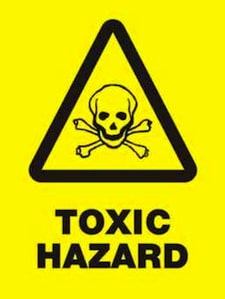The Environmental Integrity Project (EIP) has released a new report showing that coal ash disposal sites are threatening water supplies at 33 sites located in 19 different states across the U.S. The EIP says that the levels of heavy metals like arsenic in these locations are dangerously higher than federally accepted levels, which the group says could mean that legal action could be taken against the companies involved in the coal ash dumping.
From an EIP press release:
EIP found levels of groundwater contamination at 33 coal ash landfills or impoundments nationwide that are high enough to trigger the “open dumping” provisions of the Resource Conservation and Recovery Act (RCRA). Based on a review of recent (though limited) groundwater monitoring data from state agencies, the 33 active coal ash disposal sites in 19 states—Alabama, Arkansas, Florida, Iowa, Illinois, Indiana, Kentucky, Louisiana, North Carolina, North Dakota, Nebraska, Nevada, New York, Ohio, Oklahoma, Pennsylvania, South Dakota, Tennessee, and Texas—meet the open dumping criteria for one or more of the following coal ash-related pollutants: arsenic, barium, cadmium, chromium, fluoride, lead, mercury, and selenium.
EPA put rules in place in 1979 that should have forced closure or cleanup at contaminated sites long ago. Because EPA was prohibited by law from cracking down on open dumping violations, they have been largely ignored by industry, so the pollution continues to this day, and in some cases has gotten worse.
The existing “open dumping” rules were adopted in 1979 under Subtitle D of RCRA. The Environmental Protection Agency is prohibited from enforcing these requirements, and states receive no funds to implement these standards. The regulations require the closure or clean-up of dumps that pollute groundwater above certain drinking water limits, unless a State can show that the contamination will not affect actual or potential sources of drinking water.
Some areas reportedly had arsenic levels of 94 parts per billion, over 9 times greater than the legally allowed 10 parts per billion. Selenium levels were recorded at over 50 times the legal level at 1,850 parts per billion. Arsenic is a known carcinogen, and poses significant threats to the liver, cardiovascular system, and kidneys when ingested via drinking water. Selenium has been linked to an increase in Type 2 Diabetes, as well as loss of hair and fingernails, digestive problems, and nerve dysfunction.
The EIP’s latest report echoes findings from a report they produced last year. The 2010 report identified 31 sites in 14 different states where water contamination near coal ash plants was reported. Some of these areas had toxic heavy metal concentrations that were 145 times greater than the accepted legal limit. The 2010 report lists the following “severe” discoveries as: “A boron- and sulfate-contaminated drinking water supply that sickened people in Montana and had to be abandoned; major arsenic pollution from a coal ash dump that contributed to a Great Lake Bay becoming an “International Area of Concern”; a mile-long plume of contamination in Florida; mercury contamination of residential wells in Tennessee; and selenium levels in West Virginia surface waters at 4-5 times what is permitted under federal law.”
Earlier this year, EPA administrator Lisa Jackson said that her agency would not be issuing a ruling on the toxicity of coal ash this year, as she wanted to make sure that the public’s input from a series of town hall meetings last year was properly analyzed. Under both the Bush and Obama administrations, the EPA has worked with the coal industry to promote the use of “recycled” coal ash. From a DeSmogBlog report by Brendan DeMelle:
The coal industry’s influence on the process was largely peddled behind the scenes, beginning over a year ago, when lobbyists representing coal ash producers and users started swarming the White House to protect the coal industry from full responsibility for the potential health and water threats posed by coal ash waste.
The lobbyists’ ability to quickly and easily gain access and influence over the White House’s review of this critical environmental regulation calls into serious question President Obama’s campaign pledge to limit the role of lobbyists in federal decision-making.
Between October 2009 and April 2010, coal industry representatives held at least 33 meetings with White House staff on the coal ash issue, almost three times as many meetings as environmentalists and university scientists were granted on the subject.
Those most at risk from coal ash contamination are those living in lower-income communities near disposal sites. EIP says that these low-income areas are home to numerous coal ash disposal sites that are under-regulated, unlined containment areas which are usually in direct contact with groundwater.
Subscribe to our newsletter
Stay up to date with DeSmog news and alerts







